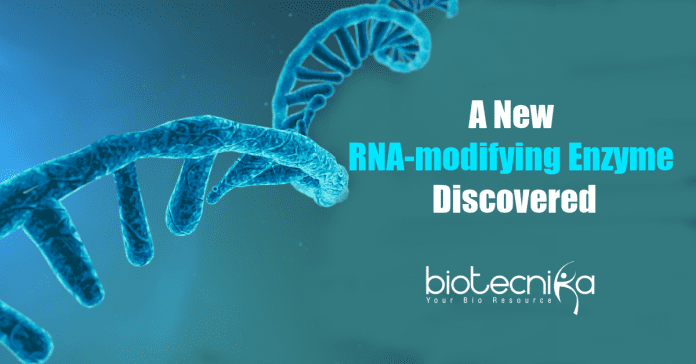Researchers discover a new RNA-modifying enzyme
A unique chemical reaction at the end of RNA molecules is discovered for the first time in human cells by the scientists led by Javier Martinez from the Max Perutz Labs, a joint venture of the Medical University of Vienna and the University of Vienna. Formerly, this reaction was just observed in viruses and bacteria. The scientist uncovered that an unexpected culprit, an enzyme called ANGEL2, executes this reaction after mapping the source of the chemical reaction among countless proteins. This enzyme – ANGEL2 may play a key role in the pathogenesis of metabolic and neurodegenerative conditions and in regulating the response to cellular stress. The outcomes of the research are published in the journal Science.
RNA is a biomolecule with countless functions, amongst them, RNA can transmit the genetic info contained in DNA, for conversion into proteins, the workhorses of the cell. A chain of building blocks called nucleotides are present RNA, which consist of sugar groups. The chemical modifications in the last sugar of an RNA chain are vital for a variety of cellular mechanisms. Javier Martinez’s Lab had initially researched on how one of these modifications, a terminal cyclic phosphate group
, is produced, then they discovered a reaction that eliminates this modification in human cells. Until now, the enzyme in charge of this reaction has remained mysterious.The researchers of Max Perutz Labs set out to trace the tracks of this mysterious enzyme using protein purification techniques. Paola Hentges Pinto, Ph.D. student, and first author said that they filtered out the candidate enzyme from a complex ‘soup’ of countless proteins step by step, following its capability to eliminate the cyclic phosphate. At last, she identified ANGEL2 as the much sought-after enzyme, together with Stefan Weitzer, the co-author.
The enzyme – ANGEL2 belongs to deadenylases – a family of enzymes, and on RNA ends it carry out a radically different reaction. A string of adenosines present at the end of mRNAs is removed by the deadenylases. Elimination of this specific type of nucleotide brings about the degradation of mRNAs. The scientists could reveal the reaction mechanism of ANGEL2 as well as explain why it does remove cyclic phosphates rather than eliminating adenosines, by doing structural analysis as part of a collaboration with Mar-tin Jinek and Alena Kroupova at the University of Zurich.
Vital clues about the biological function of ANGEL2 was obtained by modifying the levels of ANGEL2 in cells. The enzyme – ANGEL2 emerged as involved in the unfolded protein response – a type of stress reaction. The amino acid chain has to be correctly folded up in order for proteins to carry out their functions. When misfolded, non-functional proteins build-up due to cellular disturbances, the unfolded protein response is activated. The unfolded protein response seeks to fix the protein-folding defect and to restore the regular function of the cell. The researchers concluded by saying that they can inevitably show that ANGEL2 regulates the unfolded protein response, a significant finding since perturbation in the UPR is involved in neurodegenerative as well as metabolic disorders. The basis for a potential restorative application in diseases linked to unfolded protein response is provided by the findings of the research.
Researchers discover a new RNA-modifying enzyme
Author: Sruthi S






























